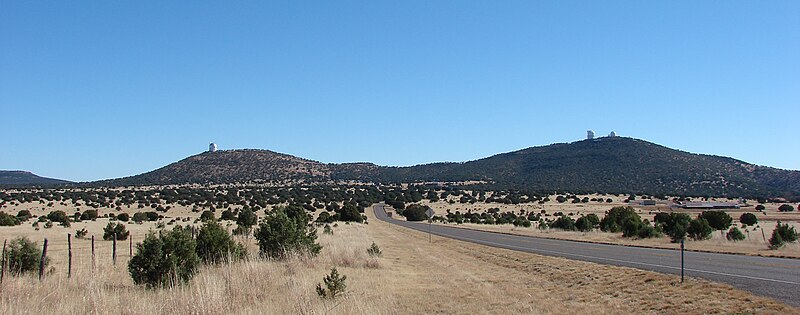Though the wealthy and modern, yet isolated and wild community was located in a nice setting, the real reason it was in the desert was because of this:

The above map is a map of the earth at night (obviously it is a collection of images taken at different times since it isn't night everywhere at the same time). The map highlights light pollution of major cities. In fact, it is amazing how clearly you can major cities represented as dots of light similar to dots on a map. Look, you can see Dallas really well, Houston well, Tokyo, Perth, Durban barely, Stockholm, Oslo, Anchorage, I can even see Fairbanks easily.
Now, located near my fathers-coworkers west Texas community, in the same desert, is the McDonald Observatory.

Hobby-Eberly Telescope. It houses one of the largest optical telescopes in the world.

Harlan J. Smith Telescope preparing for observations.
The Observatory has 4 telescopes, the largest, Hobby-Eberly Telescope and the much smaller Harlan J. Smith Telescope, Otto Struve Telescope and a large format imaging telescope. The observatory opened in 1939 with the building of the Otto Struve Telescope, at the time had the second largest telescope in the world. Eventually control went to The University of Texas. Today, visitors come and see the telescopes which to this day scan the stars.
I can't help but think about the ancient people who also scanned the stars and that connection we have to our ancestors (whether it be Mayan, Babylonian, Chinese or Viking, ect). The Maya located far but in the same larger region as West Texas built observatories too:

Chichén Itzá Mayan observatory built about 900 AD (1000 years prior to the McDonald Observatory), 2005. Photo: Bruno Girin
We will always be interested in the universe and in the stars within it. West Texas is a great place to do it, as is anywhere on earth, so long as we turn the lights out sometimes to be able to see.

A view of McDonald Observatory from highway TX-118, 2008. Photo: Jason Quinn.

Ocotillo and other Chihuahuan Desert plants with the Chisos Mountains in background, Big Bend, Texas 2006. Photo: Leaflet

No comments:
Post a Comment